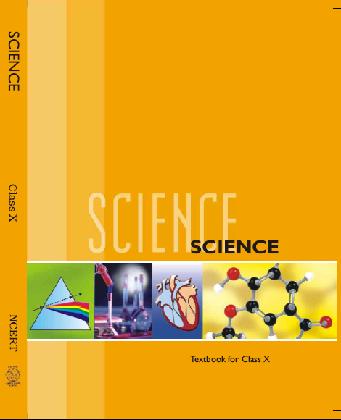NCERT Solutions for Class 10 Science Our Environment Part 2 Class 10 Science Class book solutions are available in PDF format for free download. These ncert book chapter wise questions and answers are very helpful for CBSE Board exam. CBSE recommends NCERT books and most of the questions in CBSE exam are asked from NCERT text books. Class 10 Science chapter wise NCERT solution for Science Book for all the chapters can be downloaded from our website and myCBSEguide mobile app for free.
NCERT solutions for Class 10 Science Our Environment Download as PDF

NCERT Class 10 Science Chapter wise Solutions
- 1 – Chemical Reactions and Equations
- 2 – Acids, Bases and Salts
- 3 – Metals and Non-metals
- 4 – Carbon and Its Compounds
- 5 – Periodic Classification of Elements
- 6 – Life Processes
- 7 – Control and Coordination
- 8 – How do Organisms Reproduce?
- 9 – Heredity and Evolution
- 10 – Light Reflection and Refraction
- 11 – Human Eye and Colourful World
- 12 – Electricity
- 13 – Magnetic Effects of Electric Current
- 14 – Sources of Energy
- 15 – Our Environment
- 16 – Management of Natural Resources
NCERT Solutions for Class 10 Science Our Environment Part 2
1. Which of the following groups contain only biodegradable items?
(a) Grass, flowers and leather
(b) Grass, wood and plastic
(c) Fruit peels, cake and lime-juice
(d) Cake, wood and grass
Ans. Groups (a), (c) and (d).
2. Which of the following constitute a food chain?
(a) Grass, wheat and mango
(b) Grass, goat and human
(c) Goat, cow and elephant
(d) Grass, fish and goat.
Ans. (b) Grass, goat, human
NCERT Solutions for Class 10 Science Our Environment Part 2
3. Which of the following are environment-friendly practices?
(a) Carrying cloth-bag to put purchases in while shopping.
(b) Switching off unnecessary lights and fans.
(c) Walking to school instead of getting your mother to drop you on her scooter.
(d) All of the above.
Ans. (d) All of the above.
4. What will happen if we kill all the organisms in one trophic level?
Ans. If we kill all the organisms in one trophic level, the number of individuals in the next trophic level will decrease due to non-availability of food. Also, the number of individuals in the previous trophic levels will increase because there is no one to feed on them. This will cause imbalance in the environment.
5. Will the impact of removing all the organisms in a trophic level be different for different trophic levels? Can the organisms of any trophic level be removed without causing any damage to the ecosystem?
Ans. Yes, the impact of removing all the organisms of a trophic level will be different for different trophic levels. The effect will be time related. If we remove all the producers, primary consumers will be affected instantly. Secondary consumers will affect after a gap and tertiary consumers after a longer gap.
6. What is biological magnification? Will the levels of this magnification be different at different levels of the ecosystem?
Ans. The phenomenon of progressive increase in concentration of certain harmful non-biodegradable chemicals such as DDT at different levels of food chain is called biological magnifications.
The concentration of harmful chemicals will be different at different trophic levels. It will be lowest in the first trophic level and highest in the last trophic level of the food chain.
NCERT Solutions for Class 10 Science Our Environment Part 2
7. What are the problems caused by non-biodegradable wastes that we generate?
Ans. (a) Non-biodegradable pesticides and fertilizers run off to water bodies to cause water pollution.
(b) Some of the non-biodegradable pesticides like DDT enter the food chain and cause biomagnifications in humans and other animals.
NCERT Solutions for Class 10 Science Our Environment Part 2
8. If all the wastes we generate is biodegradable, will this have no impact on the environment?
Ans. It will have only short term impact on environment, the action of decomposers will slow down and some air/water pollution will be caused. However, in longer term, there will be no impact of biodegradable wastes on the environment.
NCERT Solutions for Class 10 Science Our Environment Part 2
9. Why is damage to the ozone layer a cause for concern? What steps are being taken to limit this damage?
Ans. Ozone layer stops ultraviolet radiations from the Sun from reaching the earth. Ultraviolet rays cause cancer, cataract and damage to the immune system of human beings.
In 1987, United Nations Environment Programme (UNEP) succeeded I forging an agreement between nations to freeze chlorofluorocarbons (CFCs) production to 1986 levels. CFCs are the main cause of ozone layer depletion.
NCERT Solutions for Class 10 Science
NCERT Solutions Class 10 Science PDF (Download) Free from myCBSEguide app and myCBSEguide website. Ncert solution class 10 Science includes text book solutions from Book. NCERT Solutions for CBSE Class 10 Science have total 16 chapters. 10 Science NCERT Solutions in PDF for free Download on our website. Ncert Science class 10 solutions PDF and Science ncert class 10 PDF solutions with latest modifications and as per the latest CBSE syllabus are only available in myCBSEguide.
CBSE app for Students
To download NCERT Solutions for class 10 Social Science, Computer Science, Home Science,Hindi ,English, Maths Science do check myCBSEguide app or website. myCBSEguide provides sample papers with solution, test papers for chapter-wise practice, NCERT solutions, NCERT Exemplar solutions, quick revision notes for ready reference, CBSE guess papers and CBSE important question papers. Sample Paper all are made available through the best app for CBSE students and myCBSEguide website.

Test Generator
Create question paper PDF and online tests with your own name & logo in minutes.
Create Now
Learn8 App
Practice unlimited questions for Entrance tests & government job exams at ₹99 only
Install Now